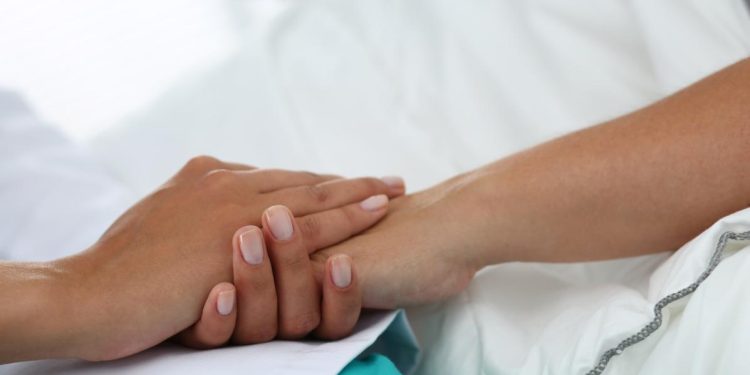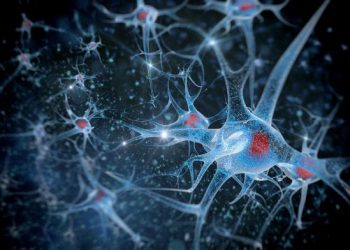The cancer cells grow in the liver, spleen and lymph nodes. They also crowd out normal blood cells, causing levels of red blood cells and white blood cells to fall.
Symptoms may include weakness and extreme tiredness (anemia). Sometimes, WM spreads too slowly to cause symptoms. This is called watchful waiting.
Symptoms
Waldenstrom macroglobulinemia is a rare blood cancer that usually spreads slowly. It is a type of non-Hodgkin lymphoma. It starts in white blood cells called lymphocytes, which are part of your immune system. These cells fight infection by changing into plasma cells that make a protein called immunoglobulin M. This protein attaches to germs and helps your immune system target them. In waldenstrom macroglobulinemia, these plasma cells are abnormal and produce too much immunoglobulin M. This can cause problems that affect many organs.
In waldenstrom macroglobulinemia, abnormal plasma cells build up in the spongy material inside your bones where blood cells are made (bone marrow). They also collect in other areas of the body, such as the liver, spleen and lymph nodes. As these cancer cells build up, they crowd out healthy blood cells and interfere with normal blood cell development. As a result, levels of red blood cells (which carry oxygen throughout the body) and infection-fighting white blood cells may fall. Levels of platelets, which help stop bleeding, also can decrease.
Symptoms of waldenstrom macroglobulinemia often start in the arms or legs, but can happen anywhere in the body. They may include swelling of the spleen and lymph nodes, weight loss, fatigue, a feeling of weakness or fever, and trouble breathing. Other symptoms include high levels of immunoglobulin M in the blood, which causes your blood to become thicker than usual (hyperviscosity). The thick blood can’t flow easily through small blood vessels. This can lead to your nose, gums and the retinas in your eyes to bleed.
If you have symptoms, your doctor will do blood tests to check for waldenstrom macroglobulinemia and other conditions. The doctor will numb part of your hip and insert a thin needle into your bone marrow to get a liquid sample. They will also do a biopsy to take another sample of your bone marrow. The doctor will send the samples to a lab for testing.
Some things can increase your risk of waldenstrom macroglobulinemia, including having hepatitis C infection and certain autoimmune disorders like Sjogren syndrome. But most people who get waldenstrom macroglobulinemia have no known risk factors.
Diagnosis
Waldenstrom macroglobulinemia is a rare blood cancer that usually spreads slowly. It’s a type of non-Hodgkin lymphoma. This cancer starts in white blood cells called lymphocytes, which are part of your immune system — your body’s defense against germs. Some of these lymphocytes become plasma cells that make a protein called immunoglobulin M, which attaches to germs and helps your body kill them.
Doctors use a variety of tests to diagnose Waldenstrom macroglobulinemia. The first step is usually a blood test to check for low levels of healthy plasma cells and immunoglobulin M proteins. Your doctor may also order a bone marrow aspiration and biopsy. For this test, your doctor will numb part of your hip and use a needle to remove a small sample of fluid from your bone marrow. This sample is then tested in a lab for signs of cancer cells.
About 90% of people with WM have abnormal B cells that mutate while they develop in the bone marrow. These abnormal cells then produce too many immunoglobulin M proteins. The most common immunoglobulin M protein in WM is monoclonal IgM. Other types of immunoglobulin M proteins are less common in WM.
Your doctor may also order imaging tests to see how your lymph nodes and bones are doing. These tests may include X-rays, CT scans and PET scans, which use a weak radioactive substance to look at your tissues. These tests help your doctor find out how advanced the cancer is and if it has spread.
Symptoms of WM often improve or go away when treatment begins. But this is not always the case, and some people with WM have long-term problems from the cancer or its treatments.
Treatment for WM depends on how fast the cancer is spreading. The main treatment options are chemotherapy and stem cell transplant. Chemotherapy uses strong medicines to kill cancer cells throughout the body. It’s sometimes used alone, but more often with other treatments such as targeted therapy and immunotherapy. Stem cell transplant replaces the blood-forming cells that your body makes with healthy ones from another person. This can help treat older people with WM and those who are resistant to other treatments.
Treatment
A multidisciplinary team of specialists is the key to treating waldenstrom macroglobulinemia. This includes laboratory-based experts who work together with clinical researchers who focus on this condition and related immunoglobulin M disorders. These teams are based at Fred Hutchinson Cancer Center in Seattle.
Waldenstrom macroglobulinemia (WM) starts in white blood cells called B-lymphocytes, or B-cells. These cells usually help the body fight infection. But in WM, these cells start to grow out of control and produce too many antibody proteins. These abnormal cells can block normal blood flow, which causes anemia. They also can lead to a swollen or enlarged spleen, which can cause abdominal pain and difficulty breathing.
These cells can also release substances that are toxic to other cells. This can cause damage to tissue and organs, such as nerves, kidneys, liver, heart, and lungs. This is called malignancy and may lead to cancer or other serious disease.
Treatment options for WM include chemotherapy, immune checkpoint inhibitors, and bone marrow transplant. Our hematology team works with you to decide which treatments are right for you.
WM is a low-grade B cell lymphoproliferative neoplasm with monoclonal IgM M protein and bone marrow involvement. In a majority of patients, the WM has an IgM paraprotein that leads to symptoms such as hyperviscosity, autoimmune hemolysis, coagulopathy, and cryoglobulinemia (leading to Raynaud phenomenon or cold urticaria).
The first-line therapy is rituximab plus bendamustine. This combination is the most effective for most patients with WM. Other regimens include bortezomib plus cyclophosphamide or ibrutinib, and fludarabine plus cyclophosphamide. Plasmapheresis can be used to lower the levels of IgM antibodies in the blood.
Our specialists offer a wide range of innovative therapies for WM and other B-cell lymphoproliferative diseases. We also provide support services for patients and their families, including counseling, education, and resources. We have a long history of treating and researching this rare disorder, and we are continuing to look for new ways to improve care.
The most important thing you can do to stay well is to see your doctor for regular exams. This is the only way to find out if you have a problem and get the right treatment quickly.
Prevention
The most common symptoms of WM are fatigue and a lump or bump under the skin (mass). Other signs may include an enlarged liver, spleen, or lymph nodes (lymphadenopathy). Blood tests can show low levels of healthy blood cells. Bone marrow aspiration and biopsy can confirm the diagnosis of Waldenstrom macroglobulinemia. These are tests that remove a sample of bone marrow for examination under a microscope.
The cause of WM is unknown, but it seems to be more likely in people who are over age 50. It is also more common in white people than in those of other races. Having a family history of B-cell lymphoma increases your risk. So does having certain diseases or conditions, such as hepatitis C virus infection, rheumatoid arthritis, or HIV/AIDS.
Treatment for WM depends on the severity of your symptoms and your IgM level. If your IgM level is high but you don’t have any other symptoms, your doctor might recommend watching and carefully monitoring you over time. This is called active surveillance, watchful waiting, or “watch-and-wait” care.
Other types of treatment are used to ease or eliminate your symptoms and slow the growth of the cancer cells. These treatments are called targeted therapy or immunotherapy. They can include medicines that block the activity of certain enzymes, such as Bruton’s tyrosine kinase inhibitors. These include ibrutinib (Imbruvica) and zanubrutinib (Brukinsa). Another targeted therapy is bortezomib (Velcade), which targets proteins that help tumors grow.
If you don’t want to take part in a clinical trial, your doctor can treat you with other standard medications. These can include monoclonal antibodies that target specific proteins in the cancer cells and don’t affect healthy cells. These include rituximab (Rituxan).
Your doctor will help you manage any symptoms and side effects of treatment. This is called palliative or supportive care and is an important part of your overall cancer treatment plan.









